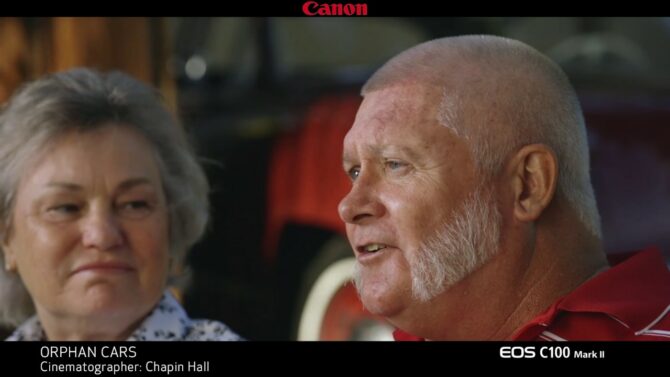The Canon EOS C100 Mark II Digital Definition:
Definition:
A signal or data expressed as series of the digits 0 and 1, typically represented by values of a physical quantity such as voltage or magnetic polarization. HD Camera brings you advanced imaging and operational features, in addition to all of the great features offered in the previous version of the C100. Optimized for one-person use and compatible Definition:
Definition:
Capable of operating with a particular selection of hardware or software. with the full range of Canon EF, EF-S, and EF-mount CN-E Cinema lenses, the C100 integrates the same Emmy®-Award winning Canon Super 35mm Definition:
Definition:
The width of standard sprocketed film used for both still photograph and theatrical cinema. CMOS Definition:
Definition:
CMOS (Complementary Metal-Oxide Semiconductor): A type of digital integrated circuit known for extremely low power consumption and the ability to run from a wide variety of power supply voltages. Sensor used in all of Canon's Cinema EOS cameras, but now replaces the Canon DIGIC DV Definition:
Definition:
A format for storing digital video recordings. Launched in 1995 it was the foundation for the MiniDV tape format. It was for 4:3 NTSC and PAL recordings and succeeded by HDV for high definition. Profession varaiation were developed by Sony and Panasonic such as DVCAM and DVCPRO, DVCPRO-50, DVCPRO-HD/100. Tapes were available in 3 sizes, S-MiniDV, M-Medium and L-Large. Subsequently, after tape, the format is now used on memory cards and files. III Image Processor Definition:
Definition:
A device that modifies signals. In audio, this typically affect dynamics, frequency response, harmonics, or time. In video, processors typically affect color, intensity, and special effects. with the more sophisticated Canon DIGIC DV 4 Image Processor.
In addition to improved RGB Definition:
Definition:
(Red Green Blue) The color space in computer graphics used to create color images on display screens. Mixing these three hues together in varying proportions creates different colors. The number of potential colors depends on the color depth. See Color Depth. video processing, the camera's dual codec Definition:
Definition:
Codec (COder-DECoder): A hardware device or software routine that digitally encodes audio or video signals for transmission or recording, then decodes them on reception or playback. capability supports simultaneous AVCHD and MP4 Definition:
Definition:
A lossy digital compression coding container format for audio, video and text. recording, including 59.94P capture along with slow and fast motion recording. Dual Pixel Definition:
Definition:
A single point of light in a display. Display resolution normally specifies the total quantity of pixels, or the count of vertical and horizontal pixels. For example, HDTV is 1920x1080 pixels or 2,073,600 total pixels (2 Megapixels) CMOS AF and Face AF, wireless FTP Definition:
Definition:
(File Transfer Protocol) A method of transferring large files over a network. video transfer, a built-in Canon Log LUT, GPS Definition:
Definition:
GPS (Global Positioning System): Utilizing satellites to detect position on earth. Useful in relocating field positions for events and location shoots. support and support for an extensive range of workflows, are additional operational features that have been added. A redesigned 270-degree rotating 3.5" OLED Definition:
Definition:
(Organic Light Emitting Diode) A high-quality light-emitting display, based on organic compounds and not requiring a backlight (and therefore capable of creating true blacks), used in video and portable displays. panel, and a tilt-able large-size EVF with large-size eyecup, further empower the camera operator.










